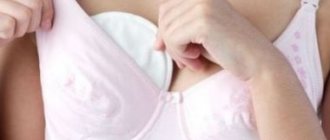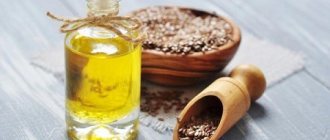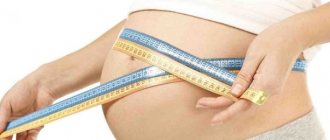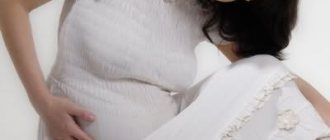Every mother wants to continue breastfeeding for as long as possible so that her baby receives the healthiest nutrition possible. That is why it is important to know how to properly care for the mammary glands, because any problems that arise will negatively affect both the child and his nutrition, and the nursing mother.
Breast care is the first necessity! It is better to avoid any troubles than to deal with them later. How to carry out proper care and what could be the consequences of not taking your breasts seriously?
Breast-feeding
The issue of breastfeeding has always caused special attention and concern among young mothers. The first months are especially important, because it is so important to learn how to properly put your baby to the breast, master convenient and comfortable positions for feeding, get used to the baby’s initially chaotic diet, and wait for stable milk production.
Despite the fact that breastfeeding is one of the most natural processes created by nature itself, it traditionally raises many questions among women. In order to understand well how to care for your breasts during lactation, you must first understand what happens to them after childbirth and how milk is produced.
In women, the mammary gland consists of peculiar lobules (about 20 of them), which contain fatty and so-called glandular tissue, which is responsible for milk production.
Reference!
An interesting fact is that the mammary glands are evolutionarily modified sweat glands!
What happens to the breasts after the baby is born?
The mammary glands are rebuilt already at the beginning of pregnancy - the body is preparing for lactation, which is influenced by many hormones in our body produced by the ovaries and pituitary gland, adrenal gland and thyroid gland.
Doctors recommend that women begin caring for their breasts during this period, without going too far with intensive procedures. Massage, overly contrasting douches, and rubbing the nipples can cause more harm to a woman’s health than good. To understand this, you need to familiarize yourself with the structural features of the mammary gland.
Your breast consists of lobes, the number of which can vary from 15 to 25. They are separated from each other by connecting partitions, as well as layers of fatty tissue. Inside these lobes are the terminal milk-producing vesicles and ducts. From the beginning of the period of “interesting position”, under the influence of the hormone progesterone, changes occur in the glandular tissue: the terminal vesicles increase in size. The chest swells and feels painful. After childbirth, a couple of days later, the hormone prolactin is activated, which regulates milk production.
Milk is produced depending on the baby's sucking movements, his needs and how often he is applied to the breast.
Breasts before and after birth
Even during pregnancy, the breasts are actively “preparing” for milk production. The mammary gland grows and changes under the influence of hormones and growth factors that are produced in the placenta. A woman’s genetics also plays an important role in this. In other words, if the mother had enough milk, then the daughter will most likely have a lot of it too.
On average, the volume of each mammary gland increases by 200 ml, and the weight - by 700 g. The milky ducts of the lobules grow in length and thickness, branch, form reservoirs, and blood flow in the gland increases. After the onset of lactation, the proportion of adipose tissue decreases, the density of connective tissue decreases, giving way to blood vessels and milk ducts. Now the main function of the gland is milk production.
The main stimulus for the start of milk production is nipple irritation. When breastfeeding, this role is played by the process of the baby sucking the breast.
However, real mature milk in large volumes does not begin to be produced immediately after childbirth. In the first 2-3 days after birth (occasionally a few days before birth, or even up to 5-6 days after), colostrum is produced. It does not look like milk in the usual sense, and is more like a thick yellowish liquid with a specific odor. It is released in very small quantities, often in the form of droplets on the nipples of a woman who has given birth. This often makes mothers needlessly worry that the baby will remain hungry.
In its composition, it is closer to blood than to milk, and contains very little liquid, but a maximum of proteins, fats and glucose. The biological role of colostrum is extremely important - since in the first days after birth the baby is still very weak and not adapted to the environment, he needs nutrition that would saturate well and would allow him to adapt to the transition from nutrition through the placenta vessels to ordinary, “human” " Since the baby’s stomach is very small, and the kidneys are not yet able to pass a large volume, it becomes clear why so little of it is produced.
Over time, the baby will get stronger, his stomach will increase, which means his ability to suck out large volumes of milk will increase. It is this mechanism that “forces” the gland to switch to so-called “mature” lactation.
An important feature of the mammary gland is that it adapts to the baby’s needs and is sensitive to changes in the rate of sucking, as well as to the volume of milk sucked. It is believed that the breast itself can regulate the volume and even fat content of milk! It has long been known that over time its composition changes, adapting to the new needs of a growing baby. Conditions for maintaining lactation:
- Feeding on demand
- Allow breastfeeding for as long as necessary (maybe even an hour), take the breast only when the baby releases it himself
- Night feedings are required (especially late at night from 3 to 7 o’clock)
Features of breast care
The mammary glands begin to rebuild under the influence of hormones. Some people believe that before the baby is born, the breasts need to be prepared for lactation. It is recommended to rub the nipples with a terry towel to make them less sensitive, douse them with cold water and carry out other not very pleasant manipulations. In fact, all these actions have nothing to do with breastfeeding.
After childbirth, milk begins to be produced under the influence of the hormone prolactin. Its amount depends on how often the child eats.
To avoid troubles, after the birth of your baby you need to:
- Limit fluid intake. The permissible limit is no more than half a liter. This amount also includes first courses, tea, and juices. If you do not adhere to this rule, too much milk will begin to be produced, the baby will not have time to suck it out and lactostasis will occur. This problem occurs in many young mothers. Lumps appear in the mammary glands, pain occurs, and the temperature may rise. In stagnant milk, bacteria begin to multiply rapidly, which can lead to mastitis - inflammation of the mammary glands. This is a rather dangerous pathology and requires urgent assistance from a specialist.
- Correctly attach the baby to the breast. If the baby does not completely grasp the nipple and areola, it means that it is not being applied correctly. This type of feeding can cause cracked nipples. Fissures make the mammary glands vulnerable to infections. To avoid this, you need to monitor your sensations during feeding. If this process causes even the slightest discomfort, it is necessary to change the breastfeeding technique. In addition to attachment, treating the nipple with preparations containing alcohol and frequent washing of the breast with soap can cause cracks. If cracks appear, you need to treat them with bepanthen or other drugs after each feeding. Also, after each feeding, it is necessary to rinse the glands with warm water.
- Correctly wean your baby's breast. You can injure the nipple if you take the breast incorrectly when the baby is already full. If you pull it out sharply when the gums are tightly compressed, the skin of the nipple will be injured. To prevent cracks from appearing, you can squeeze out a little milk after each feeding and lubricate the nipple with it.
Caring for the mammary glands after childbirth also requires special hygiene measures, which consist of:
- Selecting suitable underwear. Nursing mothers need a special bra that provides good breast support and does not cause discomfort. You need to purchase a special nursing bra. It has wide straps, is made from natural materials, stretches as your breasts enlarge, and has no underwire.
Properly selected underwear will protect the mammary glands from injury, will not interfere with blood circulation and milk flow, and will also reduce the load on the spine.
- Daily change of linen. You may need several bras at once, which need to be changed every day. It is also recommended to use special pads for the mammary glands if milk leaks from the nipples.
- Regular breast washing. This should not be done too often to avoid cracked nipples. It is recommended to take a shower in the morning and evening. The mammary glands should be washed without detergents.
- Contrast shower and massage. These procedures are recommended to avoid stretch marks. It is necessary to massage the mammary glands with a shower, first with cold water, then with hot water. After the procedure, dry them well with a towel.
- Air baths. The mammary glands need to be given rest. To do this, you need to take off your bra every evening and stay without it for a while. It is advisable to sleep in a shaping top.
It is also advisable to avoid direct sunlight on your chest. This is not useful in any case, and even more so during pregnancy and lactation. Otherwise, age spots may occur.
Walking with an open chest is beneficial. But it’s better to do this at home, and not on the beach in the sun.
To maintain breast shape, it is recommended to perform special exercises after childbirth. They will help strengthen your muscles.
To achieve the desired result, you need to exercise regularly, performing each exercise at least twenty repetitions:
- You need to fold your hands in front of your chest, palms facing each other, and press one hand on the other, providing resistance.
- Stretching an expander helps strengthen the pectoral muscles.
- The most effective exercise is push-ups. It is advisable to do push-ups on the floor with straight legs. If this position is too difficult, you can do push-ups on your knees.
Correct attachment to the breast
The skill of sucking breasts and babies is innate. Even in the late stages of pregnancy, on an ultrasound you can observe how the baby, while still in the mother’s belly, makes sucking movements or sucks its own finger! This skill was instilled in him by nature itself.
Nevertheless, it is not uncommon for a young mother, not knowing how to properly attach to the breast, to make typical mistakes. Now in most maternity hospitals, where the so-called “BG-friendly approach” is practiced, a newborn baby is put to the breast immediately after his birth. In addition to the opportunity to be together, finally see each other and strengthen the invisible connection created during pregnancy, in a biological sense, irritation of the nipple stimulates the production of the hormone oxytocin, which is responsible for milk production and uterine contractions. The midwife helps the baby latch on correctly by showing the mother signs of a good latch.
Unfortunately, this is not always the case. Complications during childbirth, a cesarean section, severe fatigue of the mother in labor, as well as health problems with the baby itself, for example, difficulty breathing - all these are reasons why mother and baby can be immediately separated. In such situations, the first food that the baby receives is a mixture from a special bottle with a silicone nipple.
But the mechanisms of sucking the mother’s breast and the pacifier are completely different:
When suckling at the breast, the baby uses the tongue, as if pressing it in a wave-like manner on the area of the areola, under the skin of which there are tiny reservoirs (sinuses) with milk. From these movements, milk flows into the nipple. At the same time, the baby's small lips tightly cover the areola, creating a vacuum for suction.
Bottle feeding only requires the work of the cheek muscles. Thanks to the wide holes in the nipple, milk flows out quickly and almost effortlessly.
Babies who have tried to eat from a nipple quickly understand that they can get food without making any effort, as a result of which they are reluctant to take the breast. Fearing weight loss, doctors insist on continuing bottle feeding. The vicious circle closes. For these reasons, many mothers leave maternity hospitals without receiving a clear understanding of proper attachment.
But it’s not difficult at all! There are a huge number of articles and recommendations, many videos have been recorded, and finally, you can always consult a pediatrician or a special consultant.
Correct attachment to the breast is, without exaggeration, the cornerstone of the success of further feeding, the guarantee that mother and baby will receive benefit and pleasure from this important process for a long time. For some couples, this happens right away and as if by itself, and for some they will have to work on the technique, but over time everything will definitely improve.
Important points for correct application:
- Comfortable position for mom, preferably half-sitting, placing a pillow under the arm on which the head rests
- It is better to latch on to a calm child who is not yet very hungry, this will make it easier for him to concentrate
- It is necessary to direct not the breast to the child, but the child to the breast
- The mouth is wide open - as when yawning, for this you need to tilt your head slightly back
- Mom's hand supports the lower part of the back of the head
- Lightly squeezing the breast along the edges of the nipple circle, as if “rolling” the nipple at such an angle so that it is directed towards the sky
- When a baby suckles correctly, his cheeks are puffed out, not retracted, and his chin rests deeply on his mother’s chest.
- If the latch is incorrect, it is better to immediately pick up the breast, carefully placing a clean little finger in the corner of the mouth, this will force the baby to unclench his jaws
- For a newly born baby, breastfeeding is hard work, which is why tired and well-fed children so often fall asleep on their mother’s breast.
Don't allow stagnation!
In the first week after giving birth, do not drink a lot of water so as not to stimulate milk production. Also learn everything about foods that increase breast milk lactation, and try to eliminate them from your diet for a while. A newborn will not be able to suck out excessive amounts of milk completely, which means stagnation is quite possible.
With lactostasis, the breasts become very swollen and painful, lumps appear, and the temperature rises. Stagnation is dangerous because it creates a favorable environment for pathogens, not to mention terrible discomfort and the development of mastitis.
Prevention of stagnation is elementary:
- if the baby has not sucked all the milk, be sure to express (manually or with a breast pump);
- Massage your breasts with light circular movements after each feeding (pumping);
- apply to the breast, leaving the nipple open, compresses - honey, beetroot, cottage cheese - they can be made quickly according to folk recipes, but it is still better to use only for prevention, and in case of serious problems, be sure to consult a doctor.
Cracked nipples
One of the most frequently occurring and unpleasant problems that can overshadow this already stressful period in the life of a young mother. You often hear from lactation consultants that if the baby is properly attached to the breast, their occurrence is excluded. However, this is not quite true. Even when the baby latches onto the breast correctly, the extremely sensitive skin of the areola and nipple is subject to significant friction.
Suffice it to remember that sucking for a baby is, without exaggeration, the most important process that ensures his survival. The force of the uvula muscles and the negative pressure in the mouth place significant pressure on the areola and nipple area, and the very sensitive skin of this area immediately reacts with irritation, swelling and soreness. The situation can be worsened by improper care and the use of drying cosmetics.
The occurrence of cracks can also be influenced by such features of the mother's breast as relatively small, flat or even inverted nipples or a narrow areola. You also need to remember that a newborn baby is very small and the size of his mouth does not always allow him to fully grasp the nipple and areola, especially if the breasts are large.
If we remember that in the first months the child spends a significant part of the time at the mother’s breast (in fact, all the time when he is not sleeping), then it becomes clear why most mothers experience discomfort at the stage of establishing breastfeeding.
Experts say that truly inverted nipples, in which breastfeeding is almost impossible, are an extremely rare case. More often there are nipples that are small in height and diameter, which means that with continued regular feedings and the right mood of the mother, the situation will soon improve, because the nipples will stretch out over time and take on a more comfortable shape.
Problems with milk production
How to speed up milk production
After birth, milk may come much later than one or two days. This often occurs in young mothers who have given birth to their first child. In this case, you need to establish lactation and teach the baby to properly latch onto the breast and nipple. It is worth doing a light massage, thermal or, conversely, cool compresses and lotions. In this case, there is no need to supplement with formula, the milk will appear soon, and the baby will be full.
READ MORE: Colostrum after childbirth: what is it, when is it produced and why is it important to feed the baby with it
Is it worth increasing the fat content of mother's milk?
The composition of mother's milk is such that it contains up to 85 percent water, so it cannot be too fatty. HF is a natural nutrition for a child that fully meets his requirements. As the baby grows up, the composition of the milk changes with it. If the child is active, gains weight steadily, and the mother has no problems with lactation, then there is no need to do anything with her. And if the milk is too fatty, the baby, on the contrary, will experience increased colic and dysbacteriosis.
How to determine whether milk is full fat
The fat content of mother's milk is checked as follows - express it 20 minutes after feeding into a sterile container. Leave the dishes in the room for six hours. Then this milk is divided into two parts - the fat content is checked at the top. Apply a ruler to the edge of the dish and look at the fat content, where one ml is equal to one percent. Indicators from 3.5 to 5 percent are considered normal.
How to determine whether a baby has enough milk
They look at the baby's weight and the number of wet diapers. A newborn should urinate 8 or more times a day. Urine should be pale in color; a colorless or slightly yellow tint is acceptable. A weight gain of 120 grams per week is considered normal, and in a month the baby should gain at least 500 grams. Already at six months, children usually weigh exactly twice as much as they did at birth.
Swelling, fullness and tenderness of the breasts
The next issue (besides proper breastfeeding) that concerns young mothers is swelling and soreness in the breasts. Indeed, these sensations almost always occur during the transition from colostrum to mature milk, usually 3-4 days after birth. Sometimes the pain can be very pronounced, the chest becomes “stony” and overcrowded. The temperature often rises.
The milky sinuses become so congested that it makes it impossible for milk to come out.
The areola is thickened, the nipple is retracted, and it is difficult for the baby to latch onto the breast. This situation is called engorgement.
Don’t be scared; it’s better to immediately take active action, especially since there are specific and effective measures that will help eliminate or alleviate this condition within 12-48 hours.
What to do in this situation:
- Don't panic or get upset! This is absolutely normal. The pain goes away quickly with the release of tension on the milk ducts and breast skin
- Under no circumstances should you give your breasts a “rest” or take a break from feeding! Milk must be continuously evacuated to avoid stagnation. The child in this case is the best breast pump
- To facilitate the release of milk, before applying, you can gently but quite firmly squeeze the area of the areola around the nipple to release the ducts and stimulate the outflow of milk.
- After the first small portion is evacuated, the “puffiness” of the breast usually becomes smaller and the baby will find it easier to latch on to the breast.
- Actively encourage your baby to breastfeed! If he is lazy or tries to sleep through a meal, it is even permissible to wake him up and carry out “feeding at the request of the mother”
Important information!
However, stagnation and the inability of milk to exit from any lobule (blockage of the ducts) in the breast can occur not only at the stage of milk arrival, but also in the future. This is called lactostasis.
The reasons may be:
- Incomplete emptying of the gland due to improper attachment of the child
- Feeding in only one position, when some lobules are emptied well, while others remain overcrowded
- Severe compression of the gland during feeding to help the baby, which may compress the ducts and overfill the lobule
- Irregular feedings, long breaks (the child overslept, lack of opportunity to feed, for example, on the road or in a public place)
- Tight bra, long sleep on stomach
- Cracked nipples, when due to soreness the mother “protects” the sore breast
- Dehydration and increase in milk viscosity
- Overheating, for example in a bath or sauna
- Trauma, bruise of the mammary gland
- Prolonged hypothermia
If infection penetrates into the mammary gland through the openings of the milk ducts on the nipples, a dangerous disease, mastitis, can develop within 1-2 days. Both lactostasis and mastitis are most often unilateral, but sometimes symptoms can be observed in both mammary glands.
Determining lactostasis is quite simple:
- Breast pain
- Discomfort when feeding
- Induration, sometimes with redness over this area, heterogeneity of the gland
- Sluggish, drop-by-drop milk production
If timely measures are taken, this condition has a favorable prognosis and can be treated fairly quickly.
What you can do yourself:
- Re-evaluate the correct application
- Diversify feeding positions, master the “armpit position” - it allows the lobules in the lower chest and armpit to be emptied well
- Frequent and complete evacuation of milk from the sore mammary gland (apply the baby more often), or using a breast pump, but not at maximum speed, this can cause cracks in the nipples and increased pain
- Do not under any circumstances overtighten your chest! This will only reduce milk production and increase its stagnation in the milk ducts. As a result, the milk ducts will be blocked, which can provoke a real purulent process
- Also, do not apply compresses containing alcohol.
- Sufficient, but not excessive fluid intake, no more than 2 liters per day
- Delicate stroking massage in a circular motion in the direction from the outer parts of the breast to the areola
- Light contrast shower without a pronounced temperature difference
If these measures do not help, then it will be safer and more effective not to self-medicate, but to visit a doctor.
The doctor may recommend the following::
- Approximately 10 minutes before feeding/expressing, apply a warm compress, after evacuation of milk - cold for 5 minutes
- In some cases, the antispasmodic no-spa can help. Taking 1-2 tablets 20 minutes before feeding will relieve spasm from the ducts and facilitate the movement of milk
- Oxytocin drops - 1-2 drops under the tongue or in the nose 5 minutes before feeding - being a natural lactation stimulator, it helps milk come out more freely at the initial stage of formation
- If there are painful lumps in the mammary gland, you can apply a thin layer of special ointments to strengthen the walls of blood vessels and improve blood circulation (for example, Troxevasin, Lyoton, Traumeel)
- Physiotherapy (phonophoresis) can sometimes be helpful.
Important information!
Under no circumstances should you self-medicate; to prescribe the correct treatment, you must consult a doctor! On the issue of lactostasis or mastitis, a young mother can be advised by doctors such as a pediatrician, surgeon or mammologist
Massage and hardening
Breast care also includes massage, contrast showers and special gymnastics. They improve blood circulation, prevent the formation of congestion, and reduce the risk of stretch marks.
Massage can be done not only as I mentioned above, but also during water procedures. Direct a gentle stream of warm water onto the nipples for a minute, slightly moving the watering can to the right and left.
A contrast shower helps strengthen your breasts and restore skin elasticity. Its duration is at least 5 minutes: first hot water, then cool. Do not direct the stream of water to one point, but move it in a clockwise circular motion around the chest. After a shower, dry your breasts with a soft towel - from the nipples to the armpits. Do not rub your nipples - this will not strengthen, but will injure the delicate skin.
If your breasts are small, avoid wearing a bra at night or wear a cotton top. And don’t forget to take air baths before bed, leaving your chest “in free flight” for 20-30 minutes.
Many mothers are interested in whether it is possible to go to the bathhouse while breastfeeding. Of course, you can if you follow certain rules. A moderate steam bath improves your mood and helps you take proper care of your breasts.
How to care for your breasts
Basic hygiene and use of cosmetics
Comfortable and enjoyable breastfeeding can only be achieved with proper and timely breast care. And of course, every young mother would like to keep her breasts healthy, young and firm even after lactation ends.
It is necessary to prepare the breasts even before birth, starting from about 7 months of pregnancy. This preparation will make it easier to adapt to the arrival of milk and allow the mother to feel more confident.
What to do before giving birth
Wearing special underwear
Already in the later stages of pregnancy, the breasts increase significantly, which can cause both their sagging in the future and increased stress on the spine. Therefore, wearing a special bra will be very useful - wide straps, a large capacious cup, no underwire, natural breathable material will allow the breasts to feel comfortable and remain firm. By the way, you should definitely take off your underwear at night.
Preparing nipples for feeding
It is especially useful for women with small, inverted and sensitive nipples. Every day in the shower, do a soft massage with a moderately hard washcloth using gentle stroking movements; this will slightly “roughen” the nipples and make breastfeeding less painful at first. You can also slightly pull your nipples forward and take daily air baths in cool air
How to properly apply a baby
Correct attachment is the basis of lactation and a component of breast care during breastfeeding. With proper attachment and feeding, the nursing mother will not experience discomfort, and the nipples and mammary glands will not be damaged. It is recommended to wash your breasts daily without rubbing your nipples. It is important to maintain the natural protective barrier and not dry out the skin.
The baby should be latched immediately after birth. Skin-to-skin contact will improve lactation and psychological interaction between the baby and mother, and teach the baby to properly take the nipple and suck. In the future, pediatricians advise feeding the baby on demand, and not according to a schedule. This has a beneficial effect on milk production and the condition of the mammary glands, as well as on the development of the child.
Breast care during feeding is to ensure that the baby latches onto the nipple correctly. Make sure that the baby grasps both the nipple and the areola. The baby's nose and chin should rest against the chest, and not sink into it. The mouth should be wide open and the lower lip slightly turned out. It is important that the baby does not swallow a lot of air along with the milk and does not choke. Find a comfortable position when feeding. If the baby is happy and relaxed during feeding, and the mother does not experience pain, then the process is happening correctly.
If the baby starts biting or pinching the nipple, immediately take the breast and tell him that this is not possible and repeat this until he stops. If your baby plays this way, offer him beads or another alternative to play with. But often babies bite their nipples when teething. In this case, teethers will help. If your baby bites your breast, do not pull or tear out the nipple! Place your little finger into the baby's mouth and gently remove the nipple.
How to care for your breasts after childbirth
After childbirth, breast hygiene is of primary importance to avoid the transfer of pathogenic bacteria from the mother’s skin through the milk to the baby. This becomes especially relevant in the case of cracks and “rubbing” on the nipples, when it is necessary to prevent the development of mastitis.
- Mandatory hand washing before any manipulation of the breast
- Daily warm shower using a mild hypoallergenic gel or soap. There is no need to wash your breasts too often, this can cause dry skin and wash away the protective bactericidal film of fats in the areola area.
- Regularly and frequently change absorbent breast pads, especially if your milk is leaking heavily.
- If there are no visible damage to the skin, then there is no need to apply additional local products.
- It is necessary to be extremely careful about any cosmetics applied to the breast, because some of them will inevitably reach the baby when sucking milk
- To moisturize the area around the nipple after feeding, you can lubricate the skin with a small amount of breast milk. The fats it contains will protect the code from drying out and have an antiseptic effect.
- If your nipples are sore, especially at first, to reduce sensitivity, after feeding you can apply ointments with lanolin (Purelan 100 from Medela, Gold Cream Ardo, Nipple Care Cream from Pigeon, nipple creams from Sanosan and Mothercare and others). Lanolin is safe for children and does not require rinsing. After 1-2 months of using lanolin, the need for it usually goes away.
Hygiene and care
The main thing in caring for the mammary glands is proper washing. And there is nothing complicated in this procedure - you need to wash your breasts 1-2 times a day with plain water without soap. True, until quite recently, breastfeeding women were recommended to carry out water procedures not only with soap, but also before each feeding. But today it has been established that such frequent and aggressive washing disrupts the water-fat balance in the skin, or, more simply, dries it out. As a result, the delicate skin of the nipples cracks and becomes inflamed. To prevent this from happening, a regular hygienic shower or washing your breasts with warm water without detergents is enough. Moreover, you should not treat nipples with any disinfectant solutions - brilliant green, alcohol or any other antiseptic. But you can use special nipple creams, for example with natural lanolin. It covers the nipple with a film that retains moisture and natural oils on the skin. Creams with lanolin do not need to be washed off before feeding - they are absolutely safe for the baby. After applying any nipple cream, it must be allowed to absorb, after which you can put on underwear. You can also leave drops of your own milk on your nipples: they will help prevent the skin from drying out and cracking.
Cosmetic and medicinal preparations for the treatment of cracked nipples
Local preparations should primarily have an anti-inflammatory and regenerating (wound-healing) effect, but not cause weeping on the surrounding healthy skin. It must be applied after the end of the next feeding.
They are divided into several groups:
- Regular ointments with lanolin, the same as for preventive breast care
- Vegetable oils (usually rosehip or sea buckthorn), but olive, peach, pine nut and other softening oils are also used, especially in the presence of crusts and in case of excessive dryness after aggressive treatment
- Dexpanthenol (D-panthenol ointment and cream, Bepanten)
- Regenerating protein preparations (solcoseryl, actovegin)
- Aloe juice
- Preparations with zinc (Tsindol, etc.) – their use is limited due to their strong drying effect
Important information!
Do not treat the area of cracks with brilliant green, fucorcin, alcohol, or ointments with antibiotics (Levosin, etc.).
To determine the most appropriate course of treatment, it is better to consult a doctor. With proper local treatment and careful treatment, the condition of the breast can improve within 2-3 days.
Breastfeeding is one of the most important factors in the health, well-being and excellent mood of the baby. Most families who are faced with this topic for the first time will go through many difficulties, worries, ups and downs along the way. However, these small problems can never overshadow the real happiness of motherhood.
Simple breast care rules will help you keep your breasts healthy, your lactation long, and every day you can enjoy unique moments of closeness with your baby.
- about the author
- Recent publications
DENIRO
Makeup artist. Stylist. Author in Your Dreams
Makeup expert. Stylist. Visagiste.
DENIRO recently published (see all)
- How to deal with female greed and its causes - 01/04/2021
- How to become more beautiful and attractive - types of diets - 12/31/2020
- Which herbs to choose for facial skin - 12/31/2020
Injuries and cracks of the nipples
Nipples require special attention when breastfeeding, as cracks are a very common problem.
Most often, nipples crack due to improper care:
- leaking milk constantly moistens the cups of the bra, so it is recommended to use special inserts or ordinary gauze napkins - they will protect the underwear, and you will not have to sit in a cafe or stand at the checkout of a hypermarket with wet breasts, and you can change the pad at any time;
- you use alcohol-containing body care products - carefully study the composition of your gel (it should not contain alcohol, but more moisturizing components) and forget for a while about soap, which wildly dries out the skin;
- you violate the feeding and weaning technique - the baby does not fully grasp the nipple, or you literally tear it off the breast (in order not to injure the nipple, first slightly open the baby’s gums with your finger and only then pull out the nipple).
Hydration
If cracks do appear, lubricate them with creams with lanolin, for example, Bepanthen or its analogues. Although it contains alcohol (cetyl and stearyl), it also contains a lot of lanolin, as well as paraffin and almond oil - all of them quickly heal wounds and moisturize the skin.
Personally, my baby already terribly chewed my nipples in the maternity hospital, I saved myself with Bepanthen, putting the cream on a cotton pad, and then putting it in my bra to the nipple.
Diamond green
And forget about brilliant green, which “armchair experts” on the Internet call a “miracle remedy.” If you apply it to your nipples even once, it will turn them into a scorched surface of the Sahara. You should not listen to recommendations for moisturizing the nipples with aloe or beeswax oil - because of the smell of aloe, the baby may refuse to breastfeed, and the oil can cause allergies.
It is better to use your own milk to wash your nipples and kill bacteria.
If the cracks have not gone away after a week, stop feeding from the injured breast for a while. You will have to carefully express it and, if necessary, feed the baby with a spoon. And be sure to go to the doctor - he will tell you what to do taking into account your condition.
Silicone lifesaver
You can also use special silicone pads - they soften painful sensations, but not all babies are happy with such “lotions”, since sucking milk through them is a little more difficult. By the way, pads are good if the breasts are small and the nipples are too small, and it is difficult for the baby to grasp them. They helped me out, but the mothers also praise “Chico” and “Medela”.
And do not overuse analgesics if your chest hurts a lot. Here I tell you what kind of pain reliever you can use while breastfeeding, but after taking a couple of tablets, make an appointment with a doctor to determine the cause of the pain and conduct a competent course of treatment.
Feeding and pumping
It is very important from the very first days of feeding to teach the baby to grasp the nipple correctly. If a baby learns to suck incorrectly, it will be very difficult to retrain him. And improper latch can lead not only to cracks in the nipple, but also to uneven suction of milk from the glands, which, in turn, causes lactostasis.
- When applied correctly, the baby should cover the nipple and areola with his mouth. The baby's nose should not touch the gland during feeding. Learning how to properly attach a baby to the breast is very important, since in the process of sucking the formation of the maxillofacial apparatus of a newborn baby occurs. Due to improper latching of the nipple, the load on the child’s jaws will also be distributed incorrectly, which in the future can negatively affect the child’s bite, the structure and health of his teeth.
- In the first period after birth, the baby has to be fed very often. Due to the large number of applications, the nipples may be slightly injured, since the skin on them is very delicate. Therefore, doctors observing a woman during pregnancy advise starting to care for her nipples several months before giving birth, hardening them so that their skin becomes a little rougher and less sensitive. Typically, the skin of the nipples adapts to the feeding process within 5–15 days after birth.
- If a woman experiences severe pain in her nipples while feeding her baby, she should use special thin silicone pads. It is very important to accurately select their size so that the child does not experience discomfort when sucking.
- You need to learn not only how to properly put your baby to the breast, but also how to wean your baby from it. You should not pull the nipple out of your baby's mouth when he is holding it tightly with his gums, otherwise this will cause injury to the nipple. If the baby does not release the nipple on its own after eating, then you need to gently open its gums with your finger, and only then remove it.
Read also:
How to develop breasts after childbirth and express them
After milk replaces colostrum, the breasts become hard, swell, and begin to hurt. This usually happens on the third day after birth. During this period, a woman should limit the amount of liquid she drinks and feed her newborn baby as often as possible. The milk ducts have not yet been developed, so milk moves through them with difficulty, as a result of which stagnation and lactostasis can form. If the baby is too weak or does not grasp the breast correctly, which is why it does not suck out milk from different segments, then the woman in labor should definitely express the milk that has accumulated in the glands. With smooth, careful movements, the breast is kneaded and the milk is expressed until the gland becomes soft.
If you cannot do this on your own and the breast remains tight and painful, you should seek help from an experienced midwife or nurse.
Stagnant milk in the ducts causes lactostasis, mastitis and cessation of lactation, so this issue should be approached very responsibly.
- Further breast care involves daily monitoring of the mammary glands, identifying segments with stagnant milk, massaging them and expressing them. If the baby sucks the breast well, then additional pumping will not be required.
- If lumps appear frequently in the breast, you need to change the feeding position and check whether the baby is latching onto the nipple correctly.
- Expressing can be done manually or using a special breast pump.










